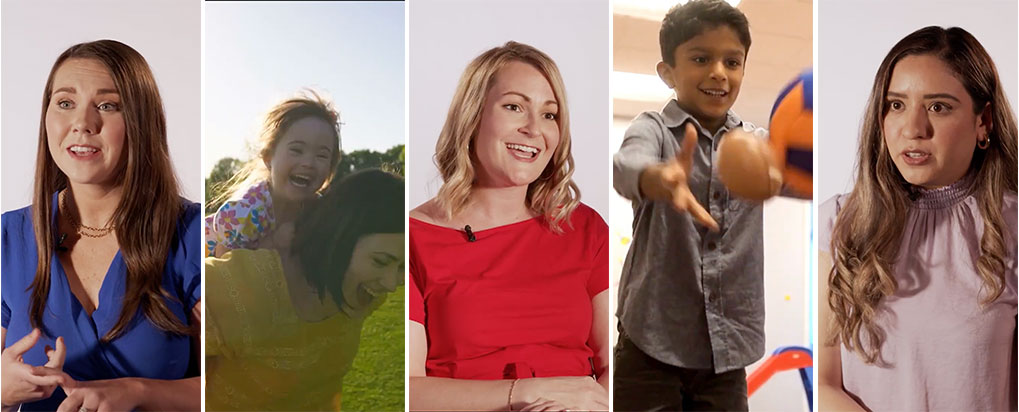
Newly Released Who We Are Video
We just completed a video showcasing who we are and what we do. We hope you find it informative and consider sharing with those you feel may benefit.

We just completed a video showcasing who we are and what we do. We hope you find it informative and consider sharing with those you feel may benefit.
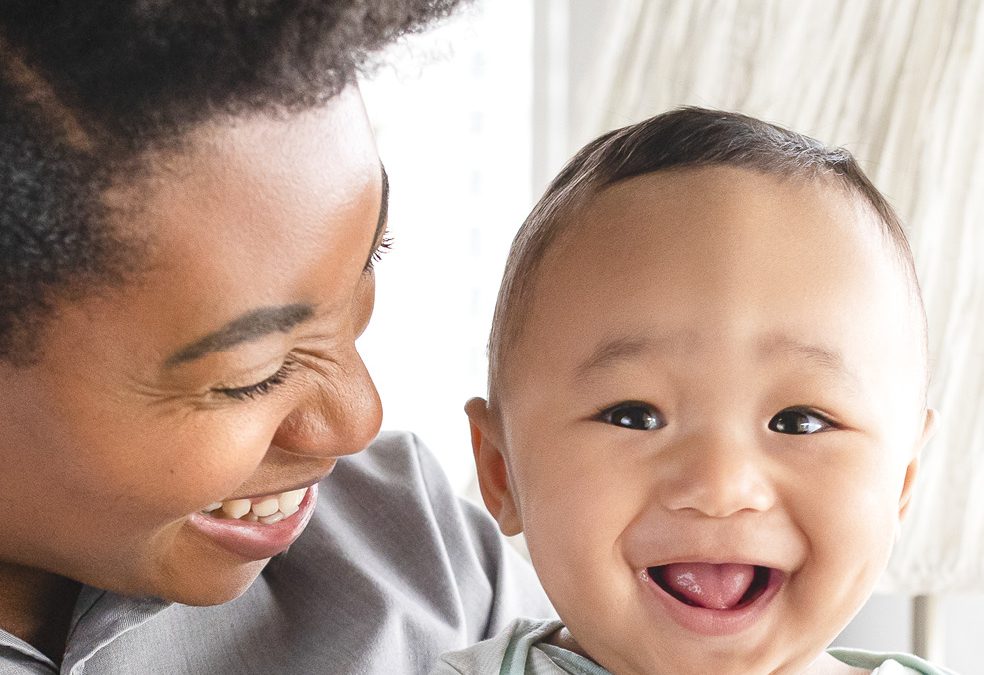
Deciding to objectively look at your child for signs of autism is hard. Thinking about your child possibly needing alternate care or schooling when that child is still a baby was not what you signed up for. But detecting early signs of Autism Spectrum Disorder (ASD) and seeking a professional diagnosis is the best way to make sure your child lives a productive and happy life.
Early signs of ASD are not easy to detect and you should always seek a professional opinion with your observations and concerns. It is not possible to diagnose your own child with ASD from reading online tests, blogs, or watching videos. The purpose of this blog is what to look for that could potentially be a valid concern for your child.
Many early signs of ASD can be confused with normal developmental behavior. All children develop at different rates. There are some behaviors that may be valid reasons for raising concern. Let’s take a look at what to look for (and what not to look for) when it comes to your infant or young child and ASD.
There are several marker behaviors that parents should take into account when observing their infant or young child developing. Again, note that none of these behaviors means your child has ASD. These are simply behaviors that are commonly associated with ASD if they persist.
The behaviors listed are from the CDC and Autism Awareness Center.
The CDC lists the following as other marker behaviors commonly exhibited by those with ASD:
Remember, all of the above behaviors and characteristics are just general markers. Some children who get diagnosed with ASD won’t exhibit any of the signs listed above. Always speak to a medical professional when you are unsure of what to be concerned about.
Autism Spectrum Disorder is hard to diagnose, as there are no medical tests that reveal it. Diagnoses are made from testing conducted by medical professionals based on behaviors, developmental milestones, and other specific criteria.
With that said, warning signs of ASD can begin to manifest as early as 9 months of age. These are warning signs, not a diagnosis, however, and need to be monitored. Keeping an eye on specific behaviors and conferring with a professional is the first step if you notice one or more marker behaviors that don’t go away as the child gets older.
The CDC notes that “ASD can sometimes be detected by 18 months or younger,” but that 24 months is the age where “a diagnosis by an experienced professional can be considered very reliable.”
The best way to seek a professional opinion is by getting one directly from your child’s pediatrician. Pediatricians can help with screening and recommendations. Sometimes developmental disorders and signs of ASD are part of a regular wellness visit for your child. Talk to your pediatrician about specifics if you have questions or concerns.
ASD screening is recommended by many pediatricians at specific developmental intervals. If your child’s pediatrician doesn’t mention an ASD screening at a wellness visit and you have concerns, ask them about it.
The American Academy of Pediatrics (AAP) recommends developmental screening for all children at doctor wellness visits at 9 months, 18 months, and 36 months of age. The AAP also strongly recommends screening specifically for signs of ASD at 18 months and 24 months.
If your child’s pediatrician believes that your child is at risk for ASD, there are two paths you can take for a formal diagnosis and care plan: private evaluations & interventions and state-sponsored early intervention programs.
Private simply refers to private pay i.e. paid for out-of-pocket or covered by an insurance company. These evaluations allow parents to select a care program of their choice to help evaluate their child.
Private evaluations are in-depth looks at a child’s development. These evaluations are handled by a licensed medical professional like a child psychologist, speech-language pathologist, occupational therapist, developmental pediatrician, or another specialized professional
These evaluations screen your child, analyze the data, determine whether or not the child needs specialized care, and then help develop a course of action. Keep in mind that private-pay evaluations may not be covered by your insurance and can cost lots of money out-of-pocket.
If you don’t have insurance or can’t afford out-of-pocket expenses for a private ASD screening/evaluation, you should look at your state’s Early Intervention program.
For those who cannot take on the financial burden or private ASD testing and screening, Early Intervention (EI) programs are available from individual states. These programs help families with children under 3 years of age get screened and will create a care plan if necessary. States are required by the federal government to provide several services free of charge.
If a screening or concern from your child’s pediatrician notes several at-risk behaviors, you may be encouraged to start an EI. Early intervention screenings do not require a formal diagnosis and are conducted by federal EI specialists.
The EI specialists will determine whether or not your child requires more comprehensive care. EI specialists will recommend the type of care they believe will be the most beneficial for your child.
Both of the paths to getting a legitimate ADS screening or evaluation listed above will provide you with a care plan. Following this care plan will get you started on helping your child get the services they need to flourish.
After an ASD diagnosis, children are commonly referred to work with one of the following types of professionals:
This is not a comprehensive list, it is simply to give you an idea of where your child may start in their developmental journey.
On top of your child receiving special care you, as a parent, will need to learn how to best help your child grow and develop. Talk to your child’s healthcare professional to learn what you can do to best provide the things they need most to grow.
Being active and supportive in your child’s development will help greatly in their development. Therapy for ASD shouldn’t stop when a clinic or class ends–parents should be aware of their child’s interests, behaviors, and moods to help them develop all the time.
Asking your child’s healthcare provider for information on how to learn more is the best next step you, as a parent, can take. Learn, teach, and do what you can to make sure your child grows up in a loving environment.
If you have questions regarding autism treatment with ABA therapy, we are here for you! Our goal is to make sure no family is turned away due to financial constraints. Our therapy team would love to talk to you. Find the location closest to you and give us a call. We’re here for you.
Sources
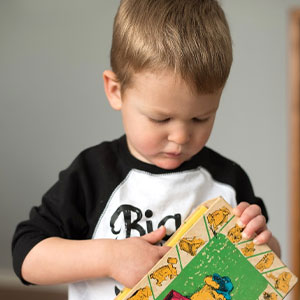
If you’re a mom of young children like me I’m sure you’ve had the thought of going to the zoo once or twice. It goes something like this:
The local zoo announces a baby. Let’s say an elephant is born so of course, you go rushing! You get to the zoo (pre-COVID, maybe) and see the beautiful baby elephant, just days old, walking behind their mama. In a short moment, you think back to your child’s infanthood and think, “baby boy(or girl) you had fewer skills than an elephant.” Infant humans, while incredibly squishy, cute, and forever smelling of Dreft and lavender, come into the world with no survival skills.
There are thousands of articles on the importance of early intervention. I spent my bachelor’s degree diving into many of them, followed by stocking my brain with new findings for the past decade. This is in part because I am a researcher by trade. The other part is because I am a nerd for human development. It fills my bucket. In my blog today I’m going to try and give you a snapshot of why development from infancy through kindergarten is so vital. I’m also going to talk about why it’s important for children with autism and our amazing clinics at Instructional ABA Consultants.
OK, let’s get started by going deep. Human infants are born without any skills because their brains need more time to develop than all other mammals. If babies grew into functional toddlers in the womb they could not come out of the birth canal. Women’s bodies are incredible but they aren’t magic; there is a limit to the size of what we can birth (yes, I’m grimacing as I’m writing this because medication-free birth with a newborn is magical, but birthing a toddler? Um…).
So we get these tiny humans, who are desperately in need of being cared for–it’s almost like they are in the womb for an extra three months after delivery. Then they begin to wake up. I remember when both Henry & Declan found their toes and fingers in amazement around three months old.
During this first year of life, thousands upon thousands of neuroconnections are made. Babies are quickly developing their brainpower, motor skills, and language through these high-speed connections. To do this babies need a few simple things. Infants need to be nurtured, to know that when they have a need their parent responds. This creates a secure connection and lets baby know the world is safe. Babies need food and lots of sleep. Once these basics are covered we move into the two most important things; environment and socialization.
I like to think of babies, toddlers, and children as little scientists learning through cause and effect. The environment is a huge blank canvas for our children to discover how their world works. Socialization is the tool children need to survive in our culture.
In their early childhood years, these two pieces are so incredibly important because of the rate children can learn. From infancy to year five, children will learn more than any other time in their lives. “What about college,” you say? Nope. These foundational years are the years where connections are made in the brain that last a lifetime.
As a professional, I love looking at how all this heavy lifting helps to shape the outcome of children’s lives. As a mama, I drove myself crazy after Declan was born and I realized I was basically running a school in my home for Henry. This wouldn’t be possible with two kids under two.
This was insanity in hindsight. This was also when I was personally able to take a deep breath and remember what I knew. The two most important things are environment and socialization. It’s not about how “cute” my day is with my boys. It’s about how often they are able to explore and engage. These days you won’t really find me teaching at a table much. Instead, you’ll see a “yes” environment set up (more on this later but basically a safe space to learn), technology out of reach (no TV/no Tablets on the regular as these devices delay both language development & socialization), and lots of talking.
Henry and Declan get to flex their learning muscles through exploration and language. I get to flex my relaxation muscle by not trying to do it all. I’m lucky in that way because my children do not need intervention. If they did I would not be able to sit back because these experiences would need to be contrived. That’s why ABA is so helpful for young children with autism. Here’s why.
When a child has autism the neural pathways or roads in the brain that tell that child how to communicate and process information are not forming, either naturally or as quickly as a neurotypical child. The connections are still there to be made but without intervention, a child with autism can’t connect the dots. What this looks like in each child with autism is different but always results in some form of socialization or communication developmental delays. This leaves the child with autism lost in their social world and wondering how to connect.
In applied behavior analysis (ABA), behavioral scientists (BCBAs) are able to assess the language and communication skills missing in early childhood based on developmental milestones. Children with autism are gifted learners but they learn differently because their neural pathways are routed differently. Through assessment, BCBAs are then able to figure out how our little students learn, what skills are missing, and how to connect those missing dots. This happens in three really key ways.
The first is one on one therapy (think personal trainer at the gym) to really teach to the student. The next is to help the child with autism apply what they are learning with their peers. Remember, socialization is hard but children who are neurotypical learn from other children. To strengthen the socialization neuropathway, children with autism need to practice these skills with kids their own age. The last is transferring learned skills back to mama and papa. If a child with autism is in therapy and can do all these skills at a treatment clinic but not at home, the neural pathway is not fully formed.
Instructional ABA Consultants runs autism clinics for children ages 2 ½ to 6 years old (in addition to our home-based therapy for older children). Our clinics (Naperville & Oak Lawn IL, Castle Rock CO, and coming soon Northside Chicago) have a Preschool Instructor designing the socialization component of our students’ days and BCBAs designing the individualized instruction. Parents are at the core of treatment goals and together we’re helping their precious children make connections in their early development.
Whether you’re a parent of a neurotypical child or a child with autism know that your child’s early years are precious. While we all can dream of our children functioning like that baby elephant walking around fully skilled, the reality is human babies and children need shaping. We’re a social species.
So set down the tablet today, pack up all the toys the marketing teams said you needed, and let your children explore and enjoy. If your child isn’t exploring, jump in and help. If you need help teaching these skills because your child has autism (or this is a new way to parent for you) reach out. We’re all in this crazy world of parenthood together.
XOXO,
Jessie
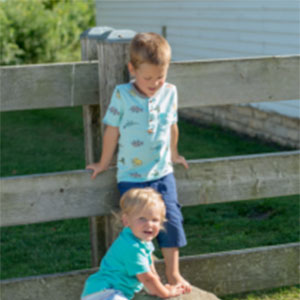
Okay, okay I hear you. That title! It’s a loaded one. I thought I’d just have a little fun this week with wrapping up our series about functions of behavior. I’ll explain the title in a bit.
Over the past month, IABA has republished my series on functions of behavior because it’s such an important part of working with children. It deserves an annual highlight! As a BCBA, owner of an Applied Behavior Analysis company, and boy mama this little piece of scientific knowledge guides so much of life.
Functions of behavior give us the framework for why a behavior continues to happen and lets us breathe easier knowing that all behaviors have a reason. We can start building our plan of action to address whatever it is we’re interested in changing once that behavior is identified.
Let me back up a little and tell you why learning about functions of behavior was so life-changing for me. In doing so I’m going to go ahead and date myself. Thirteen years ago I was working as a line therapist with adolescent boys with autism who engaged in high levels of aggressive behavior. At the time there was little regulation in the applied field and while I was supervised by a BCaBA. I was not using function-based intervention because she wasn’t designing her treatment following this principle. As a new undergraduate, I knew I didn’t want to continue to work with children with autism if I couldn’t be effective. I was so frustrated for the children that our interventions weren’t working. I then decided to apply for my master’s degree with a goal to better understand behavior. I’ve been enjoying this gift for 12 years now.
One of the first things I learned in my master’s program was that behavior is maintained by the four key functions I’ve reshared this past month; escape, attention, access to tangibles, and automatically maintained behaviors. When a problem behavior occurs you want to make sure not to reinforce the behavior with what the learner is seeking.
My beautiful clients from back home? We were directed to put them in time out every time they engaged in aggression and their behaviors were maintained by escape functions. This meant each time they engaged in aggression, putting them in time out told them we were saying, “yes! That’s what I want you to do.” What should have been done instead is follow through with demands and teaching the boys how to tell us they needed a break. Their lives could have been changed using our science properly. This is a large piece of why I love ABA so much; lives change.
Fast forward to today and the wrap of our series. Learning about functions of behavior can be overwhelming. To think that all human behavior can be categorized into four sections and then studied from there is work by itself! This is the work we love at Instructional ABA Consultants but let me tell you this first hand as a mama, that shit is hard at home.
Raising Henry has been one of the greatest blessings of my life (Dametrius and Declan are the other two). Henry, as I’ve written, is a strong-willed child with a great big heart. Henry feels and responds to things the moment his feet hit the ground. This brings me to the title.
About a year ago I was transitioning Henry to a booster seat from his high chair. It’s a value of mine that my boys eat at the table and don’t wander around eating or zone out eating in front of a screen. I love food and want us to enjoy it together as a family. Henry? Henry had wanted no part in this family value.
I knew the function of his daily battling was escape from the table and followed him through each time for sitting. He would not back down. Frazzled, I went to my team saying I was now six months in and I still had to use strict follow-through at every meal to get Henry to sit and the end was nowhere in sight. One of our BCBAs (now supervisor & PhD!) Allaina Douglas said, “Jessie you have to pick your mountain to die on.”
What she meant was if this was an important value to my family that I would need to let go of other demands through the day that were less important and literally buckle into sitting at the table. So that’s what I did. I sat down and thought about what was really important for me with Henry so that when I made any demands, including sitting, I knew I had to be ready to follow through. This allowed me to lighten up on what wasn’t a value (PJs all day? Sure! Tv all day? No way) and hone in on what I did want to see out Henry.
Henry responded beautifully to this regarding the sitting. We then of course entered the 8-month potty training saga but hey, you win some, you lose some, but I digress. In the end, I understood that as a mama and clinician I couldn’t be function-based all day every day. That shit is exhausting. I could pick my values so that I could decide which behaviors will be allowed in my home and which ones won’t be. As my children grow up this will provide them their own moral compass to follow. I parent Dametrius way differently than Declan and Henry (as he is older) but our values are still the same.
This leads me to the second “purely mama” part of this. When you are choosing to live in a home where you are the leader and not your children it takes an incredible amount of energy. It would be super relaxing and wonderful if we could all say yes to popsicles for breakfast and binging Netflix every day. For most of this, we have different values than that for our kids (zero judgment here if these are your values!).
Being a leader in the family means you will have to implement rules and therefore boundaries. This is work! In order to do this, we as parents have to learn how to rest, reflect, and take care of ourselves so we can implement our values in the home. When we don’t we risk either giving in or blowing up. While this happens to the best of us, I know personally that I want this to be the exception to my parenting, not the rule.
In order to do the meaningful work of choosing what goes in your home and standing on that mountain, we as parents have to be at home with ourselves. That means spending time with our own thoughts, deciding our own values, and creating a self-care plan. The time with your thoughts and deciding values provides a compass for your home. Remember, attacking every single behavior and function in your family home would be exhausting! Picking your mountain means picking what’s important to you.
The self-care plan is included because, let’s be honest, as a mama or papa shit gets real fast. At any given moment our children are doing the next “please don’t do that thing.” We can navigate through our days with intention (most of the time!) when we’re rested and healthy. For me, this looks like morning meditation, evening journaling, and drinking more tea than wine these days. It also looks like saying I’m sorry when I do slip up and yell or holding myself accountable if I gave in when I didn’t want to.
Last night Henry had a high-emotion night because it had snowed and he really wanted to go outside to play at bedtime. I had to say no, it was bedtime. But I sure as shit could say yes when he asked me for a cool down bath with his swimsuit on. Rock on Henry, rock on Mama! We followed our values and I sat on my mountain. I hope this helps you find yours.
Xoxo,
Jessie
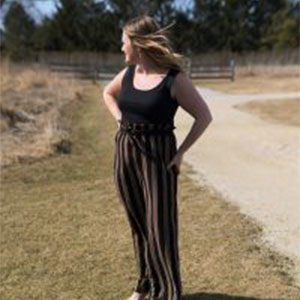
From deep within my being I have always known I’m an intuitive soul. I swallowed the feelings of the world from a young age. I can’t join any conversation or issue without feeling the full range of emotions being generated. I just can’t, I’m an empath.
I also have a force within me that demands I pay attention to the injustices of the world. To pay attention to who is being suppressed, why, and what strengths lie beneath their suppression. This is where I coined the term love warrior. As my aunt told me, “strong back, soft front.” It’s within my being to feel the energies the world places in my path and offer a way out of suffering.
Here’s the tough truth: this force of empathy was not only cultivated in me from who I was born as. It was reinforced through victimhood and abuse. I’ve spent well over two decades finding my voice despite personal abuse and suppression, layered with societal repression as a woman. I’ve been too ashamed to speak this truth fully, yet I know shame can’t live where there is light. And damn it, I’ve got something to say.
Shame holds back lions like me and angels like you from showing up as we were created to be. I thought my heightened sensitivity made me weak. I also believed there were so many things I could not do because I was told I was bad at them. Or things I should be doing because it was expected of me. Screw that.
You see, we’ve been indoctrinated to believe that society has a right to tell us who we are and how we should behave. Now don’t get me wrong, we do need to be able to operate as a collective species. Yet when we’re operating as a collective species based on fear versus love, all we’re doing is breaking our own hearts and, in turn, our world. Suffering begets suffering. Love begets love. If we honor our suffering and say to it, “I’m so sorry you came to me but I’m unwilling to bring you to another being, couldn’t we rewrite history?” I know personally, I’m going to rewrite mine.
I’ve doubted myself for a very long time and am often in awe when I look to see what I’ve done. Like, I can’t believe it’s mine. Yet here I am at 33 years old running a multimillion-dollar organization that I built with my bare hands on the backs of no one.
I’ve been told a great many lies. Let me share a few with you.
I’ve been told to temper my emotions. That they are too much to handle. My big emotions? They light fires to pave new ways and I will never tone them down, not ever.
I’ve been told to be nice, to put the needs of others before mine, and that I’m more loveable when I’m thin. Have any other women been fed that lie? It’s bullshit. Being nice is blinding us all. I cannot give when my tank is empty, and my beautiful body grew two babies who birthed without intervention. The female body is a goddess in all forms. I will not trade my stretch marks for anything, I earned them. Every one of them.
I’ve been lied to and asked to conform to make others more comfortable. I will no longer conform and thus I will never lose myself again.
I can say this because I’ve been lost in pain for such a long time. I see joy, celebrate, and then a wave of pain comes back over me. The waves that come at me are of course from the outside world and then my mind becomes confused by the pain. I’m empathic, remember? I swallow emotions. I think all love warriors do because we know how real, raw, and true feelings are. The trick here? Learn to protect our own hearts so when evil comes to us, fear finds us, or pain washes over us we can weather the storm.
I would like to think we can all walk through this world without pain. Truly, I love divine love. It’s not possible to do that because without the world showing us what we don’t want to be we would never know if we were becoming it. When pain comes for you, when a person or organization is pressing you down, remember this: pine cones bloom in fire. The pain, as hard as it is, is shaping you to become the tree you were always meant to be.
I’m walking a hard path right now. Someday I’ll tell you about it. Tonight I had a choice. Cry on the floor for the sixth week in a row or pick myself up. Today I walked into the gym and hit some heavy weights to remind myself this pain is forming me. Just as the pain of my past has taken me this far to show exactly what I do and do not want for my own life and the world.
I’ve got big plans for myself and the world.
I’m ready to call out anyone who believes it’s OK to lose sight of a child with autism based on a profit margin.
I’m ready to declare injustice and march for joy. To call abuse, abuse. I want to lead all of our broken hearts into a collective community where you can be you, I can be me, and we are all loved and accepted just as we are. I’m just getting started because the world asked me to be little, polite, and answer the story of shame. I’m making up for lost time. What has the world asked you to be? What lies have you been fed?
Won’t you walk with me and learn that you are perfectly imperfect? That if you’re lashing out in pain you can choose again? If you’re seeing someone as less than you to look again? If you’re seeing someone as more than you look again? That we are all the same. Won’t you honor the gifts of the spirit, of your beautiful, broken heart and write a new history with me.
Can’t we all just choose again? I know I’m going to. You can find me by my trail of ashes.
Xoxo,
Jessie
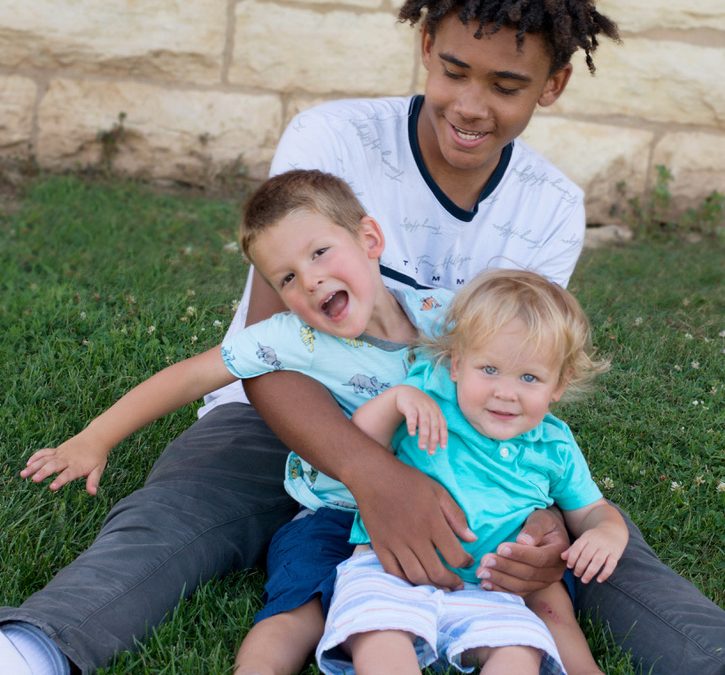
You guys, this past week has been a long and dark one. I’m so thankful for being able to write this blog. You see, I believe the universe has divine timing when we are connected to it. It always provides the lesson we need if we’re willing to listen.
I talked about why we care what others think of us and how that affects being a love warrior in last week’s blog. This led to a week of clearing a lot of energy to pave the way for living connected to my own divine nature and authentic voice. Through finding the strength in my voice I’m able to give my children the example they need to grow up using theirs. I can then also use my voice to empower other mamas to raise love warriors. Let’s dig in.
Okay, I said this past week has been a long dark one. The universe has been sending a lot of negative energy my way through different interactions. People have been coming into my life with their own insecurities and I have been asking them to leave (politely). I’ve been doing this using vulnerability and defenselessness. For, as my friend Heather reminded me, “Our strength is in our defenselessness.” I have nothing to hide and no space for hate.
As human beings, we all have traits we exhibit when we are in fear and therefore in defense of ourselves. In the current world climate, I believe we’re unpacking generations of keeping up appearances at all costs. Then, when our perceived sense of self (our ego) is brought into question, we may explode at others. Does this make sense? And that’s been exactly what’s been happening to me, people are exploding and I’m calming saying, “hate begets hate, this is not the way.”
It’s like a mask to protect ourselves from what we fear to be true about ourselves. The most common example is when someone points out something to us that reminds us of what we’re ashamed of, so we attack. Everyone does this but most people don’t consciously do it to hurt other people. If they do that’s a whole different issue.
In this defense of self versus defenselessness what happens is we can become the person other people are saying we are. We think by lashing out and becoming the biggest person in the room that we’ll “show them” how wrong the attacker is and how right we are. You guys, this is totally backward and the foundational problem to almost every human problem in the world.
You see, we are all born divinely. The spirit creates us for this perfect path. And then we meet our environment. The environment is the people, places, words, and experiences that we all go through. If we’re lucky, we’ll be born into a home that lifts us up and teaches us to live with a brave heart. If we’re not that lucky, we’re taught to fit in and push down who we truly are.
This could be from well-intentioned parents who don’t want their daughters to be fat and bullied, or gay and bullied, and so on & so forth. Or it could be from your own childhood insecurities or your perceived identity that you want your family to look like outside of the home. Even worse, it could be from an emotionally or physically abusive home. But here’s the thing; at any time we can all collectively decide to call bullshit on who the world is telling us to be. That’s a love warrior. And love warriors need strength and armor to protect them from an environment that can crush their divine nature.
There is only one way to raise a love warrior; be a love warrior yourself. That’s it, you guys. Our children demand that we love ourselves with our whole hearts because it shows them it’s okay to love themselves with their whole heart. If we continue to conform ourselves to fit into the new mom group, the gym, work, finding a ‘perfect’ partner, or living up to our family’s unrealistic expectations of ourselves, all we are really doing is telling our children to fake who they are.
If our children fake who they are they will lose themselves. I don’t know about you but I’m a grown-ass woman just now fully waking up and standing tall as myself. I’m not going to lie–it’s hard as hell. I have to model this strength for my children so when the world gets noisy they have the armor they need to be true to their own hearts.
I don’t know about you but I do not want my children to ‘fit in,’ ever. I want them to soar through the world on the wings God gave them, roots in the earth. In my house we stand up to bullies, we stand up for ourselves, we stand up for what is good and what is kind. We honor our imperfections, hold space for failure, make mistakes, and love freely. In my house we believe who we are is exactly who we are supposed to be.
Noisey world or not, we’re at home in our hearts and nothing matters more than that.
Xoxo,
Jessie
P.S. Total credit to the amazing Heather Shannon, my soul sister. And with love to my Aunt Linda.